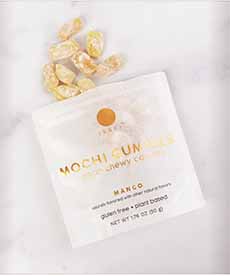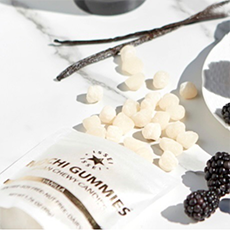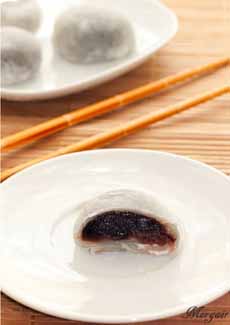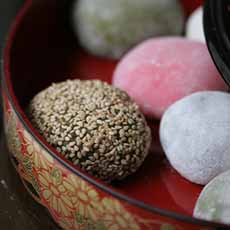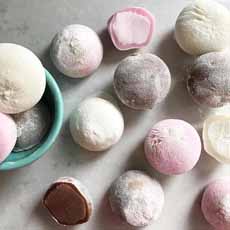Issei Mochi Gummies For The Lunar New Year & Beyond
|
|
The Lunar New Year is approaching, ushering in the Year of the Dragon on February 10th. There are many ways to celebrate, but one way is to treat your family and friends to Issei Mochi Gummies, our Top Pick Of The Week. As you’ll read below, the original mochi, which approximate the Japanese version of a rice-dough jelly donut, date back thousands of years, and were initially a sacred foo for the gods. Or as the company describes them: soft, chewy, pillowy, somewhere between a gummy bear and a marshmallow; small, bite-sized versions of Japanese mochi. Issei Mochi Gummies, gummy candy made with rice flour, the first of its kind. It’s a fusion of Japanese culture with German candy innovation (the history of gummy candy). Issei means “first star” or “one life” in Japanese, but it also refers to first generation Japanese immigrants in the U.S. In the latter meaning, the word symbolizes the earnest hope for immigrants who want to bring the best of their heritage to their new home in America. And Issei Mochi Gummies have done just that. Mochi Gummies embraces the ancient Japanese tradition of mochi, a beloved rice-based confection with centuries—if not millennia—of history. They were created by a mom who wanted to wanted to turn her children’s favorite candy—gummies—into something all natural, without artificial ingredients or animal-derived gelatin. The result is a delight, currently available in four flavors that are all-natural, gluten-free, dairy-free, kosher, non GMO, and vegan: We’re already planning to give the Strawberry flavor for Valentine’s Day, the whole assortment for Mother’s Day and stocking stuffers, and every occasion in-between. Issei Mochi Gummies are available: The exact origin of mochi is unknown, although it is believed to have originated during the Jomon period (ca. 14,000–300 B.C.E.), when the Japanese people first began to cultivate rice. Thus, mochi (which is both the singular and plural form of the noun), have been part of the food culture of Japan. The first recorded mention of mochi is in the Nihon Shoki (the Chronicles Of Japan), a Japanese historical text from the 8th century. Before they became a snack, mochi were considered a sacred food for the gods, with worshipers bringing neatly piled mounds of decorated mochi to Shinto shrines as offerings to the gods for the New Year. They were initially consumed during religious ceremonies and festivals. Mochitsuki, the traditional mochi-pounding ceremony, became a symbolic activity during the New Year celebrations. (And what a laborious task it was! Electric mochi makers are commonly used today.) Mochi symbolize longevity, well-being and prosperity. It thus became a food for celebrations, gatherings, and expressions of gratitude. It also became an energy food: from the battlefield, where it was easy for samurai to carry and prepare; to the farm, consumed by Japanese farmers to increase stamina on cold days. The traditional mochi (photo #7) are soft pastry-like mounds made with pounded* rice dough and spring water, steamed and served at room temperature or warm. Japanese enjoy mochi as Americans might enjoy a cookie or two, and the more beautiful creations are impressive enough to be served as a fine dessert, or to offer guests with a cup of tea. Varieties of mochi evolved, both sweet and savory. For example: And now, there are mochi gummies. Enjoy them! Here are traditional good luck foods for the Lunar New Year, including some of these: |
|
|
________________ *We think of mochi as glutinous rice (sticky rice) pounded into submission (or into Play-Doh). Luckily, modern manufacturers have introduced sweet glutinous rice flour, sold as mochiko flour, so pounding is no longer necessary.
|
||
